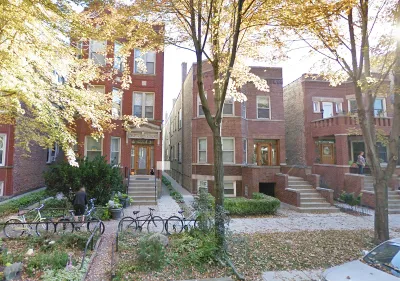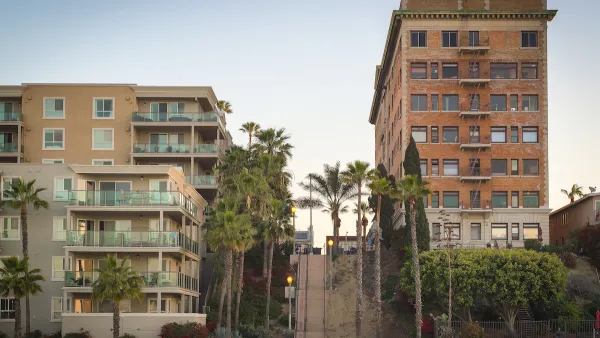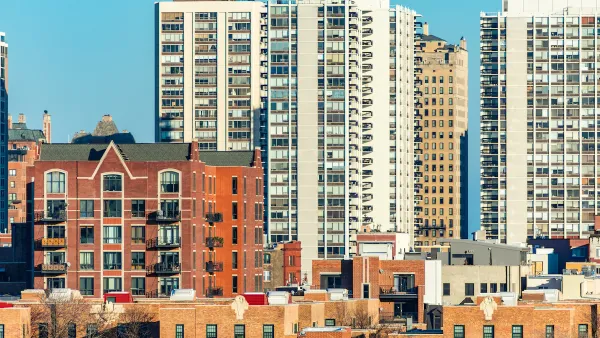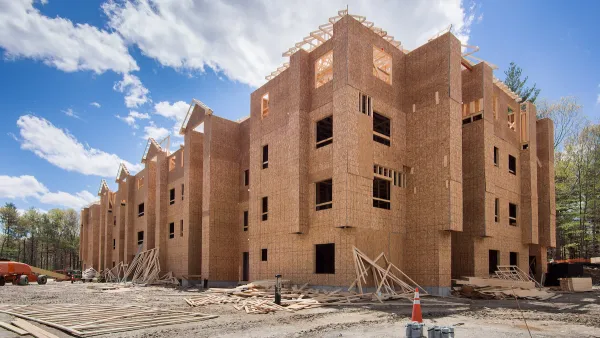One Chicago organization is working to promote the rehabilitation and maintenance of naturally occurring affordable housing, a valuable—and vulnerable—source of affordable housing units.

Hadassah Patterson, writing in Next City, reminds the reader that new construction only makes up roughly one quarter of the affordable housing market. “The rest is comprised of Naturally Occurring Affordable Housing, or NOAH, which falls between subsidized housing and high-rent buildings.” The city of Chicago, Patterson writes, lost 10 percent of its NOAH between 2012 and 2019, putting this reliable source of affordable housing in peril.
“One Chicago CDFI [community development financial institution] has been working to preserve that housing for decades. Called Community Investment Corporation (CCI), they have a wide range of programs, including their Troubled Building Initiative, to support the acquisition, rehabilitation and preservation of affordable rental housing.” That initiative, which dates back 20 years,
“is aimed at unresponsive landlords. Instead of the city of Chicago filing code violations, TBI pulls together multiple city departments including housing, police and building, to identify at-risk structures and appoint CIC as a stakeholder to make repairs.”
“CIC also brings together multiple organizations to collaborate on strategies, policies and programs to preserve affordable housing through its Preservation Compact. Preservation Compact is home to a $48 million acquisition pool for 1-4 unit buildings, and a $34 million low-cost financing fund for affordability in higher-cost markets.” The group advocated for tax relief for multifamily housing projects, “which incentivizes low- to moderate-income owners to improve buildings while keeping them affordable. This is critical to preserving more locally-owned NOAH stock as national markets face speculation from aggressive investment groups without stake in community stability. ”
FULL STORY: When Preserving Affordable Housing Is Cheaper Than Building It

National Parks Layoffs Will Cause Communities to Lose Billions
Thousands of essential park workers were laid off this week, just before the busy spring break season.

Retro-silient?: America’s First “Eco-burb,” The Woodlands Turns 50
A master-planned community north of Houston offers lessons on green infrastructure and resilient design, but falls short of its founder’s lofty affordability and walkability goals.

Delivering for America Plan Will Downgrade Mail Service in at Least 49.5 Percent of Zip Codes
Republican and Democrat lawmakers criticize the plan for its disproportionate negative impact on rural communities.

Test News Post 1
This is a summary

Test News Headline 46
Test for the image on the front page.

Balancing Bombs and Butterflies: How the National Guard Protects a Rare Species
The National Guard at Fort Indiantown Gap uses GIS technology and land management strategies to balance military training with conservation efforts, ensuring the survival of the rare eastern regal fritillary butterfly.
Urban Design for Planners 1: Software Tools
This six-course series explores essential urban design concepts using open source software and equips planners with the tools they need to participate fully in the urban design process.
Planning for Universal Design
Learn the tools for implementing Universal Design in planning regulations.
EMC Planning Group, Inc.
Planetizen
Planetizen
Mpact (formerly Rail~Volution)
Great Falls Development Authority, Inc.
HUDs Office of Policy Development and Research
NYU Wagner Graduate School of Public Service





























